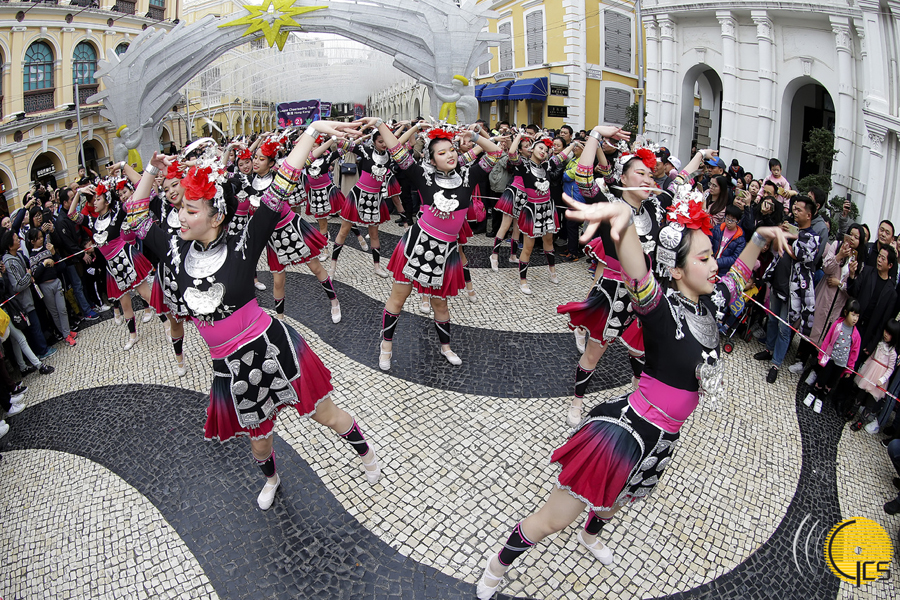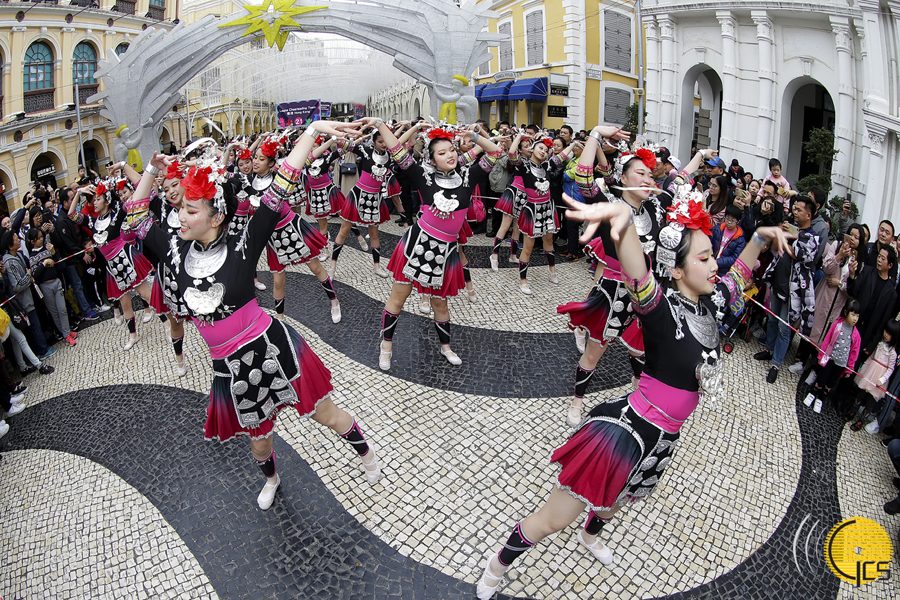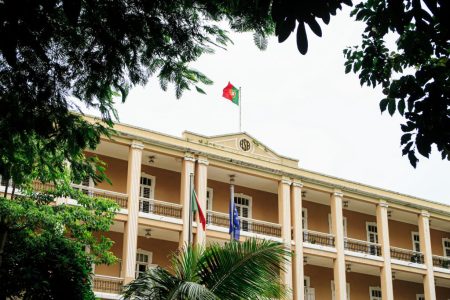The 2018 Macau International Parade, now in its eighth year, took place Sunday.
The opening ceremony was held at 3 p.m. at the Ruins of St. Paul, organised by the Cultural Affairs Bureau (IC) in conjunction with the Macau Government Tourist Office (MGTO) and other entities.
The parade celebrated the 19th anniversary of the establishment of the Macau Special Administrative Region (MSAR), “based on the concept of the cultural encounters between China and Portuguese-speaking countries,” according to an IC statement.
Macau administration returned to China at midnight on December 19, 1999, when the MSAR was established and the Macau Basic Law took effect.
This year the parade featured 76 groups, comprising 57 local groups and 19 groups from the Chinese mainland, Hong Kong, Argentina, Columbia, France, Germany, Italy, Japan, Malaysia, the Netherlands, Russia, South Korea, Spain, and Portuguese-speaking countries such as Brazil, Guinea-Bissau, Mozambique and Portugal.
According to the statement, there were over 1,700 performers who paraded from the Ruins of St. Paul to Praça do Largo Sai Van, dancing along the way and showing several large-scale art installations.
The parade kicked off at the St. Paul’s Ruins and went through Rua de S. Paulo, Largo de Senado, Praça da Sé Avenida da Praia Grande before arriving at the square at Sai Van Lake.
Based on the theme of mythology and folklore from China and the Portuguese-speaking countries, various groups presented totems and mascots which embodied the cultural origins and essence of each country and region they represented, showing the ancient myths and folklore, the statement noted.
There were also face painting, vocal and dance performances as well as jazz improvisations that were going on at various locations along the route of the parade.
On the sidelines of the parade, The Macau Post Daily spoke to one of the performers, Victor Kumar, the Indian Cultural Association of Macau’s president and choreographer, and asked him how the parade has evolved in the past eight years. Kumar answered: “I am here with my group to perform a Ganesha theme which is a dance that represents the spiritual energy towards the god of India and his name is Ganesha and we’re here to share that Hindu religion. This is my eighth time being in the parade and there’s a lot of improvement and artists and [the Cultural Affairs Bureau] have given a lot of opportunities for different communities, and it is a great gesture to bring all the artists together. I think that Macau is a place where the arts and culture are highly respected and that’s why I am taking [in] every part of this parade because it is a great platform for everyone to shine and show their talents with passion and love.”
Ganesha also known as Ganapati, Vinayaka, Pillaiyar and Binayak, is one of the best-known and most worshipped deities in the Hindu pantheon. His image is found throughout India, Sri Lanka, Thailand, Bali, Bangladesh and Nepal. Although he is known by many attributes, Ganesha’s elephant head makes him easy to identify. Ganesha is widely revered as the remover of obstacles, the patron of arts and sciences and the deva of intellect and wisdom. As the god of beginnings, he is honoured at the start of rites and ceremonies, according to Wikipedia.
The event finished with a stage performance outside Macau Tower Sunday night.
Several of the participating groups were awarded prizes last night in the presence of Secretary for Social Affairs and Culture Alexis Tam.






